Join Cultural Samvaad’s WhatsApp Channel
Why is Diwali Celebrated?
Diwali is probably India’s grandest festival and is known variously as Deepawali or Deepotsava or the ‘festival of lights’. Celebrated over 5 days in the month of Kartika in the Indian calendar (October – November), Deepawali has special significance in most Indic faiths – Hindu, Jain and Sikh.
Historical and literary studies have managed to conclusively trace the origins of the festival to at least 500 years before the common era. It is safe to aver that Deepawali or the Deepotsava in some form or the other is more than two and a half millennia old. The lights of Diwali have not remained confined to Indian shores and have travelled to many parts of Asia and the rest of the world with the flowering of Indic faiths and the spread of the Indian diaspora.
Do You Know: Why do we light Diyas on Diwali?
In this note, I do not intend to delve into the historical origins of Diwali but will focus on some of the multifarious stories that are associated with this great symbol of pluralistic Indian culture and tradition.
The Return of Lord Rama and his Coronation
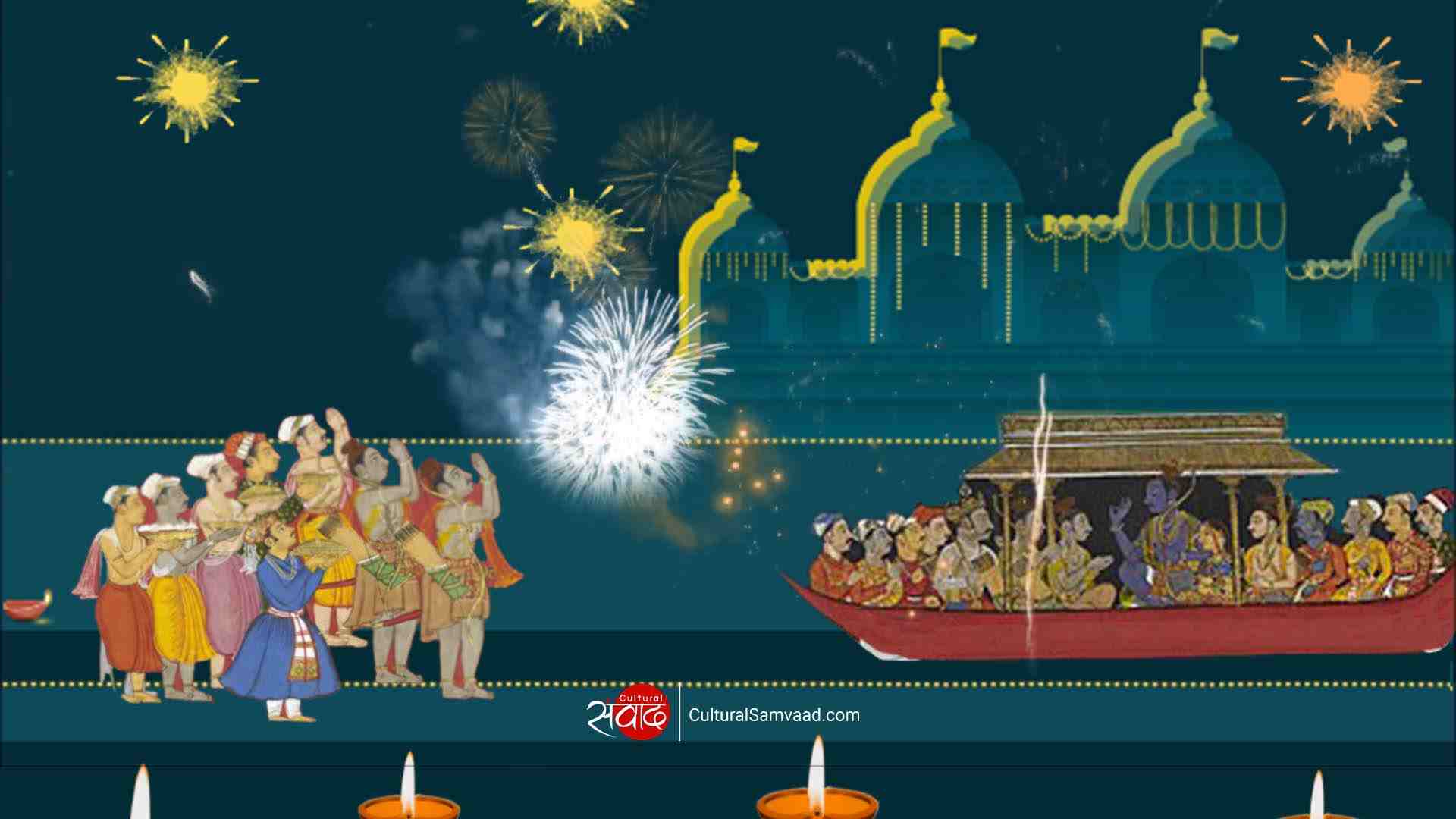
It is believed that Lord Rama, Devi Sita and Lakshman returned to Ayodhya on Diwali after completing their exile and defeating the king of Lanka – Ravana. Rama was coronated as the King of Ayodhya and heralded the dawn of a golden era or Ram Rajya. The ecstatic residents of Ayodhya, lit up the streets and their homes with millions of diyas (lamps) to celebrate the return of their beloved king – the light of Ayodhya.
Wish your loved ones a Happy Diwali with Greetings in Sanskrit, Hindi and English
Since that auspicious day thousands of years ago, we commemorate the return of Rama and the establishment of a new order of Dharma or righteous conduct by lighting up the no-moon night of Diwali with innumerable diyas.
The Nirvana of Lord Mahavira
The last tirthankara, in the Jain tradition – Lord Mahavira is said to have attained nirvana on the day of Diwali. He attained freedom from the endless cycle of life and death in the town of Pawapuri in Bihar. As per Jain faith, the jiva (soul or atma) of the tirthankaras resides in Siddhaloka after their moksha.
Lord Mahavira was he who showed the world and his followers true light. When this light was extinguished, the need to light lamps was felt to dispel the darkness that was left behind on earth. Deepawali not only commemorates this momentous event in the life of one of India’s greatest preachers but also exhorts us to search for true knowledge or light and to work towards our moksha or liberation.
The Killing of Narakasura by Satyabhama and Krishna
The mighty but evil Narakasura is supposed to have ruled over Pragjyotishapura (modern day Assam). Even though he was the son of mother earth (Bhudevi), he had wrongfully imprisoned 16,000 innocent princesses. Satyabhama who herself was a reincarnation of Bhudevi and her consort Lord Krishna defeated Narakasura in the proverbial battle between dharma and adharma, beheaded him and set the innocent princesses free.
Narakasura met his end on Naraka Chaturdashi and hence, this day before the new moon night (amavasya) of Deepawali, is a celebration of the victory of sattvic and divine elements over tamasic and baser elements.
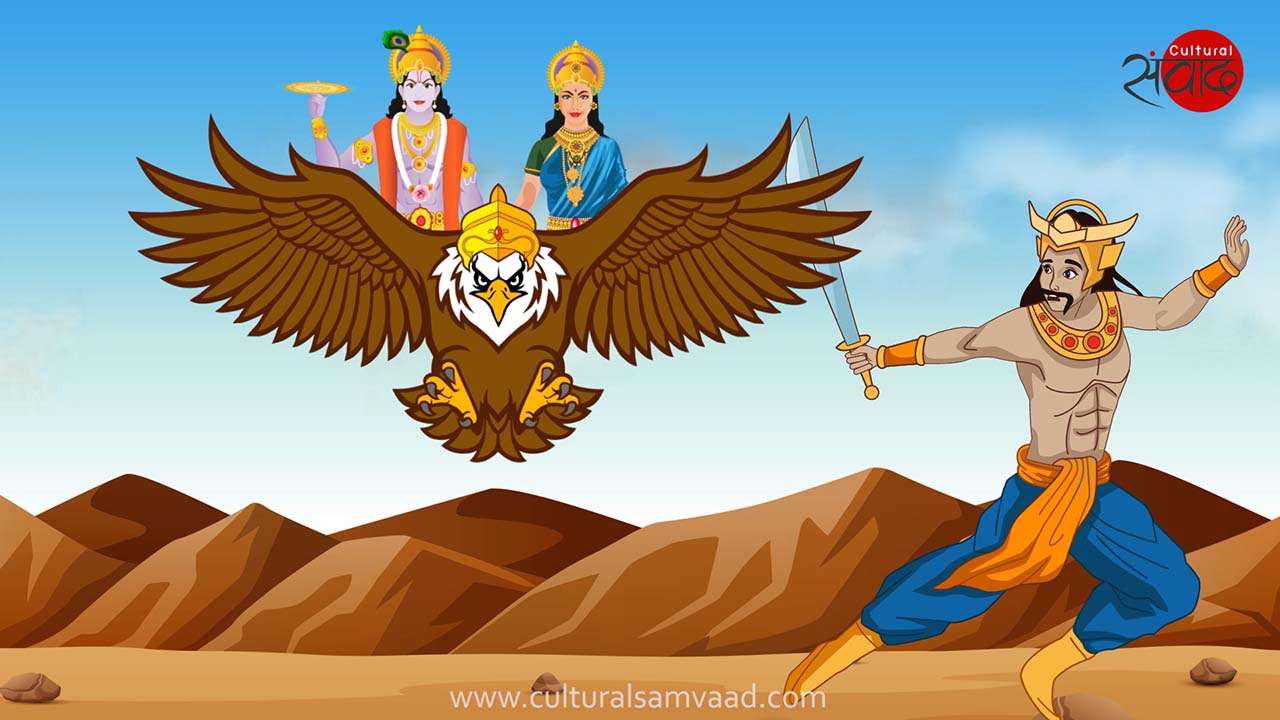
The Deliverance of Bali by Vamana
The story of Raja Bali and the Vamana avatar of Vishnu is well known. It is believed that it was on Diwali that Vishnu visited the kingdom of Bali in the form of Vamana. Bali promised to give him the land that he could measure in three steps. Trivikrama Vishnu, measured heaven and earth in his first two strides. Recognising that the time of his moksha had come, Bali requested Vamana to put his foot of his own head as the third step. Vishnu did as requested and Bali is said to have attained deliverance.
Bali was illuminated by true knowledge on Diwali. The light of the lamps of Diwali reflect our eternal quest for true knowledge and as we light them, we pray for true knowledge like Bali.
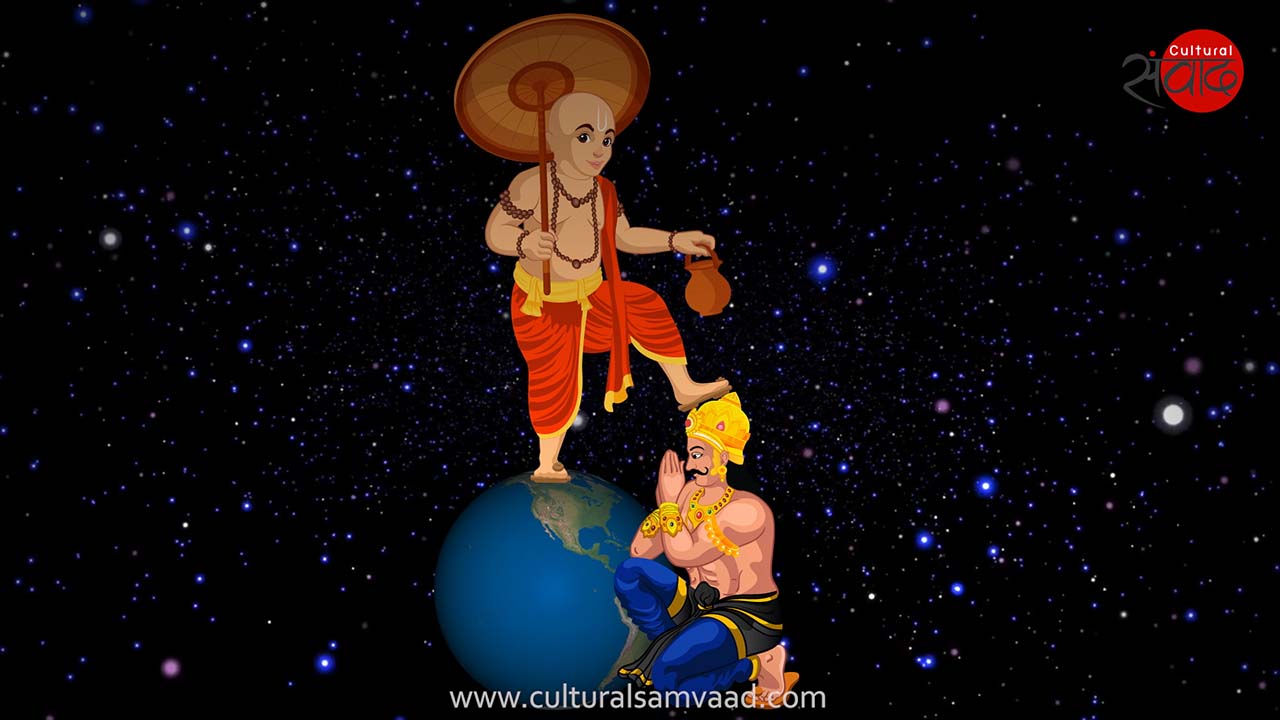
आप इस लेख को हिन्दी में भी पढ़ सकते हैं|
The Lifting of the Govardhan Mountain by Shri Krishna
The day after the no-moon night of Diwali is one of the most auspicious days in the Indian calendar. One of the stories associated with this day is the lifting of the Govardhan mountain by Shri Krishna. When Indra became arrogant and haughty, he decided to punish the residents of Vrindavana with incessant rains and thunderstorms. Krishna saved his village folk by lifting the Govardhan mountain with his bare hands so that they could huddle beneath it. Krishna became Giridhar and Indra’s arrogance met its end.
The festival reminds us that pride and arrogance do not last, the arrogant are bound to fall.
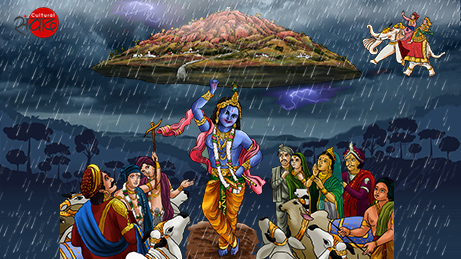
The Release of Guru Hargobind Singh – Bandi Chorr Diwas
Guru Hargobind Singh, the sixth guru in the Sikh tradition had been imprisoned by the Mughal emperor Jehangir at the Gwalior Fort. He reached the holy city of Amritsar on the auspicious day of Diwali after he was finally set free with 52 other prisoners. The people of Amritsar who were already celebrating Deepawali were elated and the Guru was welcomed with heightened festivities.
Since then, the Sikhs also commemorate Diwali as Bandi Chorr Diwas (Bandi Chhor Diwas) the day when the Guru who was imprisoned was released signifying the victory of truth.

The Worship of Maa Kali
The ferocious yet loving Maa (Mother) Kali is worshipped on the dark night of Diwali. The dark Kali is the one who annihilates the forces of darkness to allow the forces of light to triumph. One of her most famous exploits which is recounted during this festival is the destruction of the asura Raktabija. Raktabija was a fierce demon who could not be easily destroyed. Every time a drop of blood fell from his body on the ground, a new demon exactly like Raktabija was born. In a fierce battle, Maa Kali spread her tongue wide and started hurting Raktabija. Every drop of blood that fell from his body fell on her tongue and hence the new demon was born in her mouth. She devoured every demon till there was no blood left in Raktabija’s body and he finally fell to the ground.
Our false sense of ego is like the blood of Raktabija. We need to annihilate it completely to transcend our ‘I’ness.
A Grand Welcome to Mata Mahalakshmi
The festival of Diwali belongs to the presiding deity of wealth, prosperity and auspiciousness in the Indic tradition – the radiant and golden, Mata Mahalakshmi who sits on a lotus and blesses one and all. It is said that on the dark night of Deepawali, she visits the homes of her devotees and showers them with all that they desire. At the material level, one prays to Lakshmi for physical wealth but on the spiritual plane, she bestows true wealth – knowledge, moksha and truth. This is the form of Lakshmi that endears her to her devotees who even include the devatas.
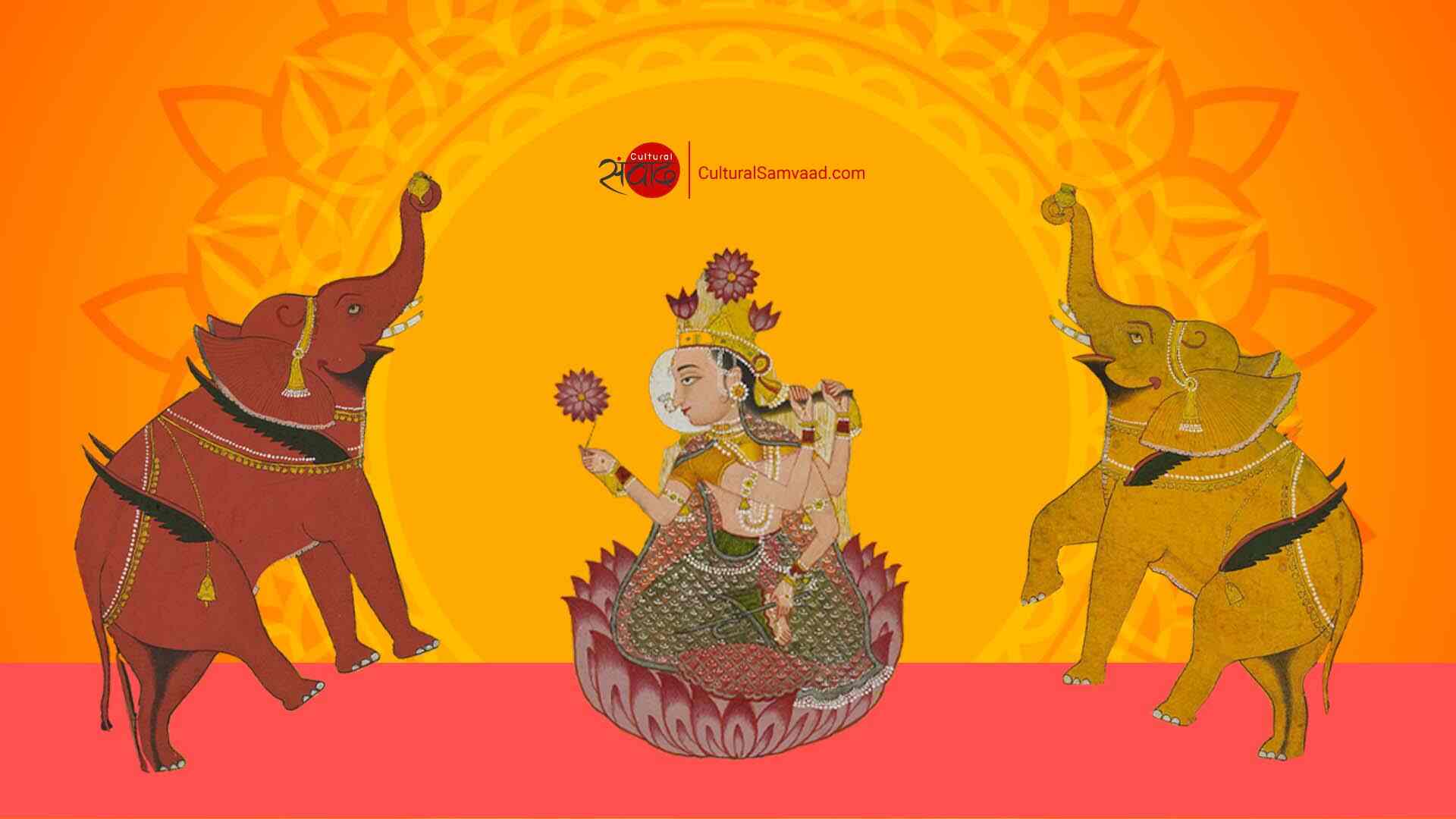
The timeless stories and traditions of Deepawali and the glowing light of innumerable diyas is symbolic of the victory of truth over falsehood, of light over darkness, of knowledge over ignorance, of dharma over adharma and of hope over despair.
Shubha Deepawali! Happy Diwali!
Why do we light diyas on Diwali?
Editor’s Note:
This is not an exhaustive note and video on the stories and traditions of Diwali. It mentions some of the more widely narrated reasons for celebrating Deepawali. Please do note that there may be multiple versions of these narratives. The multiplicity adds to the diversity and plurality of this living tradition.


Add comment